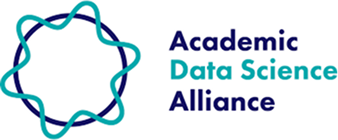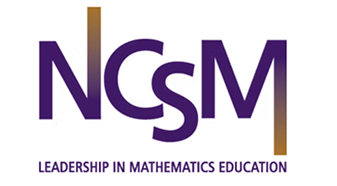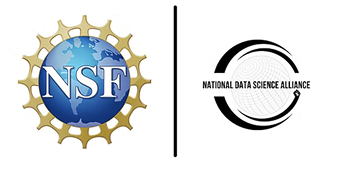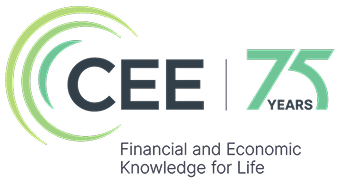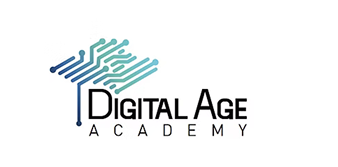Graphical literacy
Comfortably read graphs with accuracy and make sense of data visualizations by answering questions about how the data is represented with precision.
K–2 Competencies
Answer questions about whole number numerical data or categorical data represented visually (e.g., bar graphs, picture graphs).
Recognize how data is organized into categories or groups. e.g., each bar or picture represents a certain quantity in a graph
Classroom resources
Data Science Starter Kit Module 5: Telling the Story - Visualization and Communication
Welcome to the culminating skill of data science—communicating your findings effectively so others can understand and act on them! This module focuses on how to create clear visualizations and compelling narratives that make data accessible and meaningful to different audiences.🔗
Visualization and Communication isn’t about creating fancy graphics or impressive presentations. It’s about developing the empathy and clarity to think, “How can I help others understand what this data means and why it matters to them?” The best data science in the world is useless if it can’t be understood and applied by the people who need it.
3–5 Competencies
Answer questions about fractional valued numerical data or categorical data represented visually with one or two variables.
Recognize unusual data points and consider reasons why they might appear.
Work with a variety of data types, including numerical data, charts, graphs, and visual representations to draw conclusions and understand the story the data is telling.
Classroom resources
Data Science Starter Kit Module 5: Telling the Story - Visualization and Communication
Welcome to the culminating skill of data science—communicating your findings effectively so others can understand and act on them! This module focuses on how to create clear visualizations and compelling narratives that make data accessible and meaningful to different audiences.🔗
Visualization and Communication isn’t about creating fancy graphics or impressive presentations. It’s about developing the empathy and clarity to think, “How can I help others understand what this data means and why it matters to them?” The best data science in the world is useless if it can’t be understood and applied by the people who need it.
6–8 Competencies
Answer questions about continuous numerical scaled data, location data, and/or categorical data represented visually with multiple variables.
Describe the relationships (or lack thereof) represented in scatterplots (e.g., direct vs. inverse, positive vs. negative).
Review non-standard data representations that appear in popular media, identify the key visual elements and what they mean, and describe the intent and evaluate whether or not it is successful.
Classroom resources
Biodiversity Snapshot by DataClassroom
The purpose of this lesson is to help students create effective data visualizations to communicate conservation stories and understand how Indigenous communities use data science to protect biodiversity. Students will analyze camera trap data from the Peruvian Amazon, create multiple visualization types to reveal biodiversity patterns, and craft data stories that connect scientific findings to real-world conservation efforts and cultural preservation.
Data Science Starter Kit Module 5: Telling the Story - Visualization and Communication
Welcome to the culminating skill of data science—communicating your findings effectively so others can understand and act on them! This module focuses on how to create clear visualizations and compelling narratives that make data accessible and meaningful to different audiences.🔗
Visualization and Communication isn’t about creating fancy graphics or impressive presentations. It’s about developing the empathy and clarity to think, “How can I help others understand what this data means and why it matters to them?” The best data science in the world is useless if it can’t be understood and applied by the people who need it.
9–10 Competencies
Answer questions about and explain the data in a variety of data visualizations, including non-standard visualizations. Extract key insights, trends, and patterns from the data.
Describe the potential relationships (or lack thereof) represented in scatterplots (including linear, exponential, and logarithmic) and debate which function is the best representation for the shape and context.
Classroom resources
Who is the Data MVP of the NBA? by DataClassroom
The purpose of this lesson is to help students create sophisticated data visualizations to analyze NBA player performance while critically examining how data-driven arguments compare to human judgment in decision-making contexts. Students will use FiveThirtyEight's RAPTOR statistics to build evidence-based cases for MVP candidates, then evaluate the limitations of data storytelling when complex human factors influence real-world decisions
Data Science Starter Kit Module 5: Telling the Story - Visualization and Communication
Welcome to the culminating skill of data science—communicating your findings effectively so others can understand and act on them! This module focuses on how to create clear visualizations and compelling narratives that make data accessible and meaningful to different audiences.🔗
Visualization and Communication isn’t about creating fancy graphics or impressive presentations. It’s about developing the empathy and clarity to think, “How can I help others understand what this data means and why it matters to them?” The best data science in the world is useless if it can’t be understood and applied by the people who need it.
11–12 Competencies
Understand how uncertainty around point and effect estimates are communicated on data visualizations with error bars.
Evaluate the effectiveness of data visualizations, including the risk of misleading the reader.
Classroom resources
Too Old to Mango? by DataClassroom
The purpose of this lesson is to help students master professional-level data visualization and communication skills by analyzing agricultural research data on mango tree productivity across different ages. Students will create publication-quality visualizations, conduct statistical analysis, and communicate findings to diverse stakeholders in ways that can influence agricultural policy, economic decisions, and global food security strategies.
Data Science Starter Kit Module 5: Telling the Story - Visualization and Communication
Welcome to the culminating skill of data science—communicating your findings effectively so others can understand and act on them! This module focuses on how to create clear visualizations and compelling narratives that make data accessible and meaningful to different audiences.🔗
Visualization and Communication isn’t about creating fancy graphics or impressive presentations. It’s about developing the empathy and clarity to think, “How can I help others understand what this data means and why it matters to them?” The best data science in the world is useless if it can’t be understood and applied by the people who need it.
Advanced Competencies
Describe the potential relationships (or lack thereof) represented in scatterplots (including linear, exponential, logarithmic, polynomial, and piecewise) and debate which function is the best representation for the shape and context.
Visualize confidence intervals or margins of error using error bars with computer-based software.
Visualize margins of error of a continuous variable using error bands with a computer-based software.
Classroom resources
Support other teachers by sharing a resource
Do you have a lesson plan, video, or tip that could help others teaching this topic?
Share feedback on the Learning Progressions
Your feedback helps us improve these progressions for teachers around the world. Thank you!
Share feedback on the Learning Progressions
Your feedback helps us improve these progressions for teachers around the world. Thank you!
Share a classroom resource
Suggesting a resource helps students around the world learn essential data science skills.









.png)

